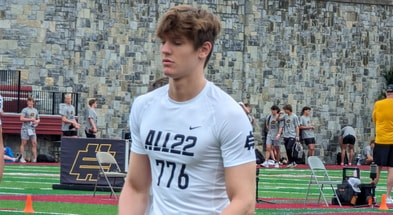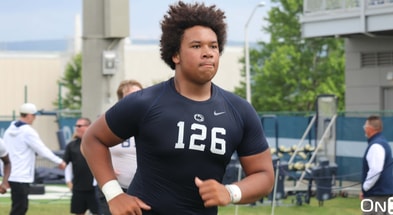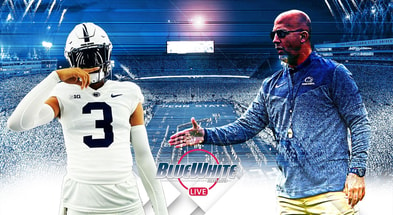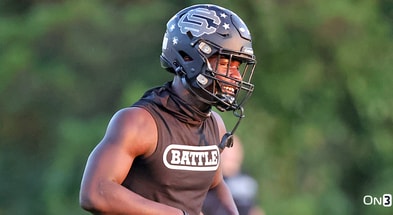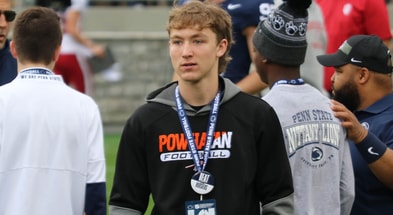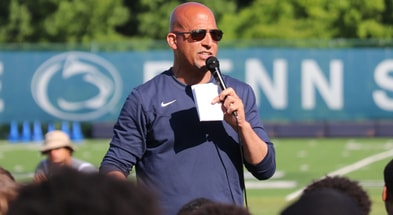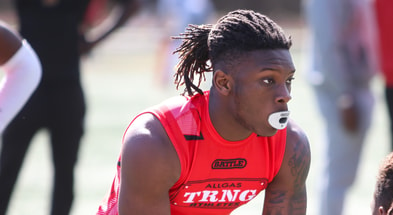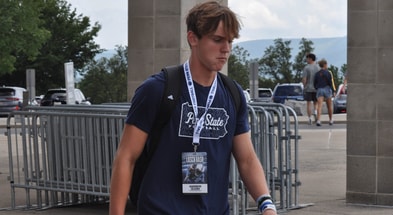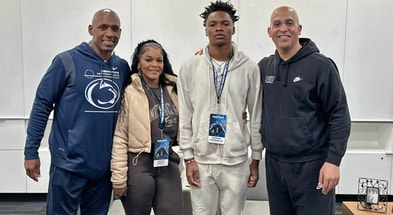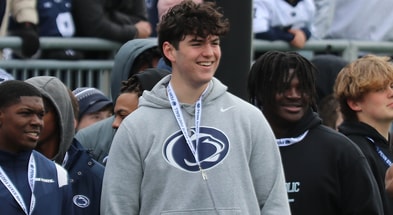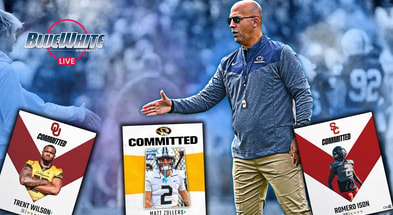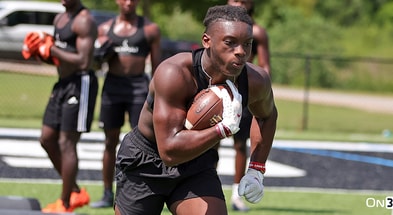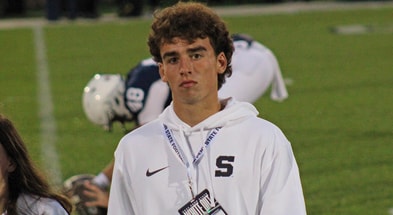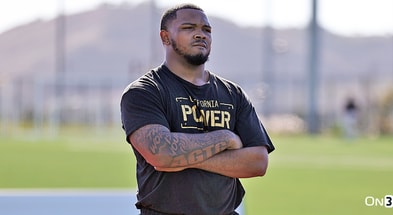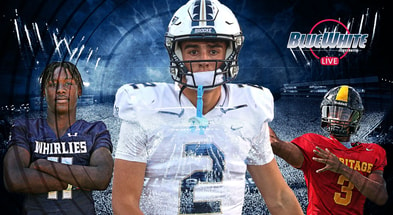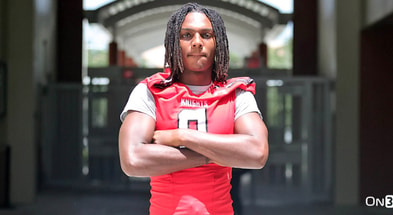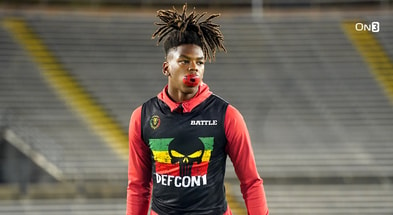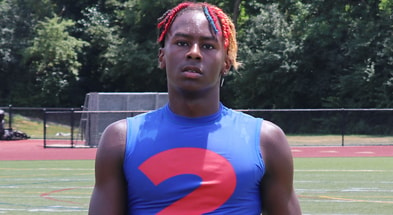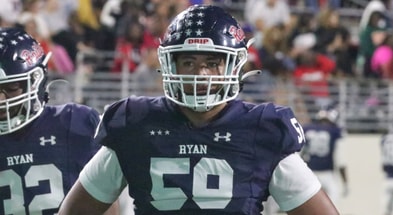How do we fix the month of December, and is a July signing period a good thing for Penn State?
For Penn State and every major college football program, December has become an absolute mess. I’m sure you’ve read this a lot over the past few weeks.
For fans, it’s fun. Many of them have a bowl game to look forward to. You also have an early signing period that may not produce the drama we saw a decade ago but still gives fans a reason to tune in and get excited about the future. You then have the transfer portal, which gives fans a reason to get excited for next season. Many will pretend they hate all of this, but our traffic numbers at Blue White Illustrated suggest they can’t get enough.
For now, let’s put the transfer portal to the side. Because of academic schedules, college football can’t spread everything out like the NFL does. They can try, and likely will change things in the future, but for the time being, I don’t see how the timing of the transfer portal can really change. If the NCAA actually tried to restrict player movement between fall and spring semesters, it’ll never last in court. They know this.
I do think there’s a fix for that down the road, but we’re still a few years away. I’ll come back to this later.
In the immediate future, I do think there are some things that can change relatively soon, with the early signing period being arguably the most popular talking point. I’ve read easily 10+ different articles about this over the past few weeks.
But here’s the thing that none of those writers acknowledged: it’s not the early signing period that’s the real problem. It’s the work leading up to it.
The December Contact Period has to end
Having a three-day period a week or so before Christmas where high school players can sign has never been the real problem. Sure, it’s work, but that work can all take place within a team’s facility. It’s also just one day of work for the vast majority of schools.
The real issue in December is all the work that coaches and recruiting personnel must do in the weeks leading up to the early signing period. That’s the problem.
For two-plus weeks last month, Penn State’s coaches spent time in just about every corner of the country. We tracked James Franklin one day flying from Las Vegas to New Mexico to St. Louis in the span of about eight hours. For Franklin, much of his travel is centered around the transfer portal and visiting with the players who are about to sign. For the assistant coaches, it varies. Someone like Marques Hagans spent more of his time meeting with receivers in the portal. Ja’Juan Seider likely spent much more of his time focused on high school prospects and overall relationships at key schools.
Link: Four-star offensive lineman confirms plans to visit Penn State in January
The main question I have is simple: how will that even be possible next December when the College Football Playoff expands to 12 teams?
The first round of games for the CFP is scheduled for Dec. 20 and 21st. The quarterfinals will then take place Dec. 31 and Jan. 1, with the semifinals and championship game coming later in January.
Are we really going to send coaches out on the road ahead of the four biggest games of the season to that point? The four teams with a bye week can operate similarly to this year, but I don’t see how teams playing in that first round could realistically juggle the demands that’ll be asked of them if you also want these schools to put their best foot forward for the playoff.
The recruiting calendar for the Football Bowl Subdivision begins in August and ends in July. That makes this spring a crucial period for change, with the new calendar expected to come sometime in April. If they’re going to get rid of the December early signing period, it has to be announced in the next few months.
But again, that’s not the real problem. Getting coaches off the road in December is one thing that can be changed for next year.
How important are in-home visits anyway?
Is it really all that important for a head coach to eat dinner with a recruit and his family if that player has already been committed for months? Are those in-home visits really needed anymore?
That’s a topic I’ve thought about a lot recently. 20 years ago, when official visits were oftentimes the only visit a recruit would take to a school, I would argue yes, in-home visits are important. But nowadays, with recruits taking so many unofficial visits, many of which start when they’re freshmen and sophomores in high school, what are families really getting out of those in-home meetings two weeks before they sign?
Link: Penn State WR Dante Cephas expected to re-enter NCAA transfer portal
For the Class of 2024 signees, they took exactly 200 visits combined to Penn State between the 25 of them. That’s an average of eight visits per player. Recruits like Cooper Cousins, who committed two years before he could sign and took 22 visits total, skew those numbers a bit. But even if you remove him from that total, it still averages out to about seven visits for each player.
Of course, those who live closer have been on campus much more, but even players like Jon Mitchell and Antoine Belgrave-Shorter, who live down in Florida, made it to campus three times. Eagan Boyer drove 16 hours roundtrip to State College on four occasions. That doesn’t include his official visit, which had flights paid for.
I think if you asked some of my colleagues, they’d argue that it’s important for coaches to be able to do in-home visits. But whenever I’ve asked this to coaches and recruiting personnel, they often say it’s outdated and not really necessary. 20 years ago, sure. Nowadays, not so much.
However, even if the NCAA were to decide that in-home visits are needed, a recent change in the recruiting calendar provides an ideal time for them much earlier in the year.
The April & May Contact Period
Since I started covering recruiting in 2010, we’ve always referred to the period between April 15 to the second-to-last week in May as the “spring evaluation period.” Head coaches weren’t allowed on the road during this period, but assistant coaches were allowed to travel to watch players workout or practice. Not all states allow spring practice, but all prospects are doing some sort of workout during this stretch.
Back in April, when the 2023-2024 calendar was released, the NCAA changed this period of time from an evaluation period to a contact period. This was a notable change that got some publicity, but probably not to the amount it deserved.
I see this as a prelude to what’s to come down the road.
This upcoming spring, assistant coaches will be allowed to meet with juniors (Class of 2025) for the first time at their school. Again, assistant coaches could always go to the school and watch them workout or practice, but now they can actually have extended conversations with those players and their parents. That’s a big change.
As of now, head coaches like Franklin won’t be allowed out this year to meet with players, but if the NCAA were to decide that in-home visits are that important, that could easily be changed in the years to come.
So, I ask, why not move in-home visits to this period?
The more I think about it, it’s a great time for them to take place, potentially helping both players and coaches decide on who/where they want to take official visits come June. I think it’s questionable whether they’re needed at all, but this is a much more ideal time to do them compared to December.
Moving the early signing period to July
Before I rant, I fully understand that coaching changes will mess things up. You’ll have to give players an out from their letter of intent if a head coach and his staff are let go. That change was already made this past summer.
But since the early signing period started for the 2018 class, I’ve always believed that it needs to move to July.
In the 2024 class, Penn State picked up a commitment from Jaylen Harvey in mid-October. Aside from him, the other 24 players were all committed by July 22, with Liam Andrews committing on July 21 and T.A. Cunningham committing a day later.
The overall trend since official visits were allowed from April to June has moved a ton of commitments to the summer. This we know.
Just looking at a few schools in the Big Ten, Michigan held commitments from 25 of its 27 signees since Aug. 1. For Ohio State, 16 of its 20 signees came before preseason camp began. USC and Oregon had slightly lower numbers – 13 of 20 for USC, 17 of 26 for Oregon – but that’s still more than half of the class.
T-Frank’s Film Room: Breaking down Penn State’s passing game vs. Ole Miss
Simple moving the early signing period up won’t fix everything. You’ll likely see more players hold off on signing in the summer compared to December to play it safe, but you can also come back to recruiting those players in January.
The current December to January dead period runs from Dec. 18 to Jan. 11. The four semifinal games are set for Jan. 9-10 next year, meaning that if the ending of that dead period stays the same, there will be just two teams still playing by the time the January contact period begins.
Those two schools will also be among the best of the best. Because the current December contact period starts on Dec. 1, there’s already data to back up how it could impact those two schools when you consider that conference championship games overlap with the first few days that coaches were out on the road this year.
Telling recruits that you can’t visit them for a week because you’re focused on the biggest game of the year has never really hurt those schools. You won’t find many examples of Player X choosing School Y because School Z was playing in the Big Ten Championship and didn’t come visit him while other coaches could. As important as relationships and NIL have become, winning is still very attractive to the nation’s top recruits. That’ll never change.
But for a school like Penn State, a signing period in the final week or two of July, before camp starts, would work really well. It won’t be perfect everywhere, but I think it can realistically be done.
The real change that’ll impact everything
There’s one thing that I believe can fix the vast majority of issues: collective bargaining. This is what I hinted at in the intro. Realistically, I still think we’re two years away from this, at best. And just like many of the talking points above, the College Football Playoff is a major reason why.
In 2026, the rights to the CFP will once again be up for bid. Disney, who owns ESPN, will surely be involved. FOX has also made it clear that they want a piece of the pie. Would Comcast – who owns NBC – be interested? Maybe Turner Broadcasting? They’ve all been reported on publicly as having some interest.
Sports television rights are getting tricky these days, largely because of how much money was funneled to the NFL a few years back. That’s impacted a lot of sports, with NASCAR being the most recent example. I know most of you don’t follow NASCAR or its television rights, but they had to outsource races to Amazon, Turner and The CW Network to get the money they needed. This is a theme I think we’ll see moving forward. The more networks you get involved, the more money you can bring in.
The College Football Playoff is a different animal because of the viewers it brings in, but if they do decide to pair up with multiple networks, which feels like a lock, the amount of money it will bring in will be a massive talking point. College football is unquestionably the second biggest sport in America now.
Link: Future Penn State QB Ethan Grunkemeyer ‘carries himself like a professional’
That’s when I believe we’ll see a climax regarding the amount of pressure schools and conferences will be under to adopt pay-for-play officially. That doesn’t mean it’ll change right away, but the pressure will ramp up significantly. There’s a reason NCAA president Charlie Baker released his plan for a new football subdivision and direct compensation last month. He knows what’s coming in two years.
People who get paid much more than me will have to sort out whether that model is sustainable or not, but I do think direct compensation from schools can impact the transfer portal. Legally, you can’t stop players now, but could you at least slow down the January portal if a player is tied down financially to a specific school?
Even if you can’t stop it, maybe you can force that player to pay something back if he decides to leave. Maybe his new school has to pay a buyout? Or even if that all is too much, maybe that player has to at least sit out spring practice. I think those issues will absolutely be discussed when we get to this point. Collective bargaining is inevitable.
Player compensation is a major reason why December is as hectic as it is. All the travel isn’t really needed in my eyes either, but the time so many coaches put into managing their current roster last month has to change as much as anything else.
In my eyes, collective bargaining is the only thing that can truly change the chaos we just watched.
